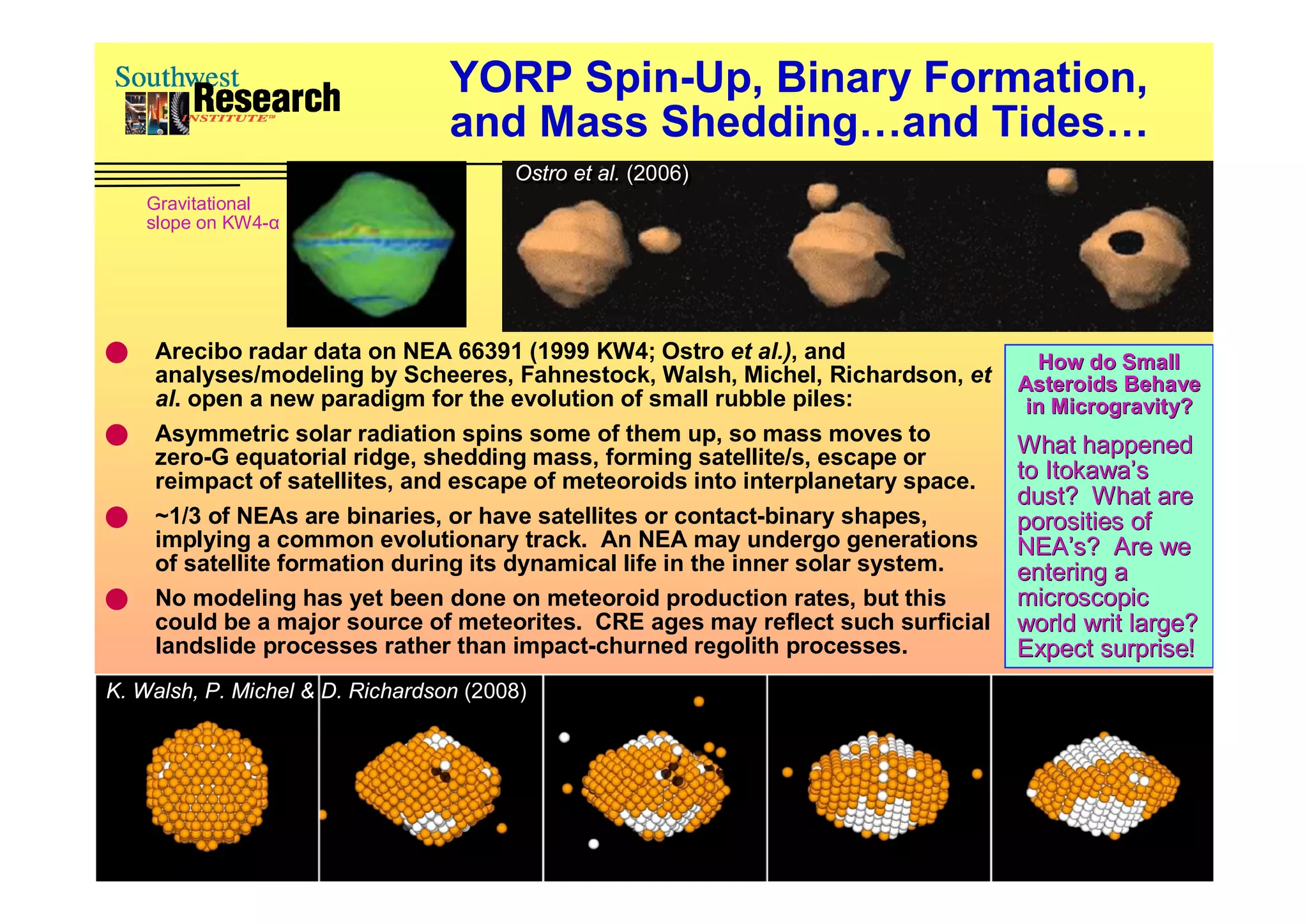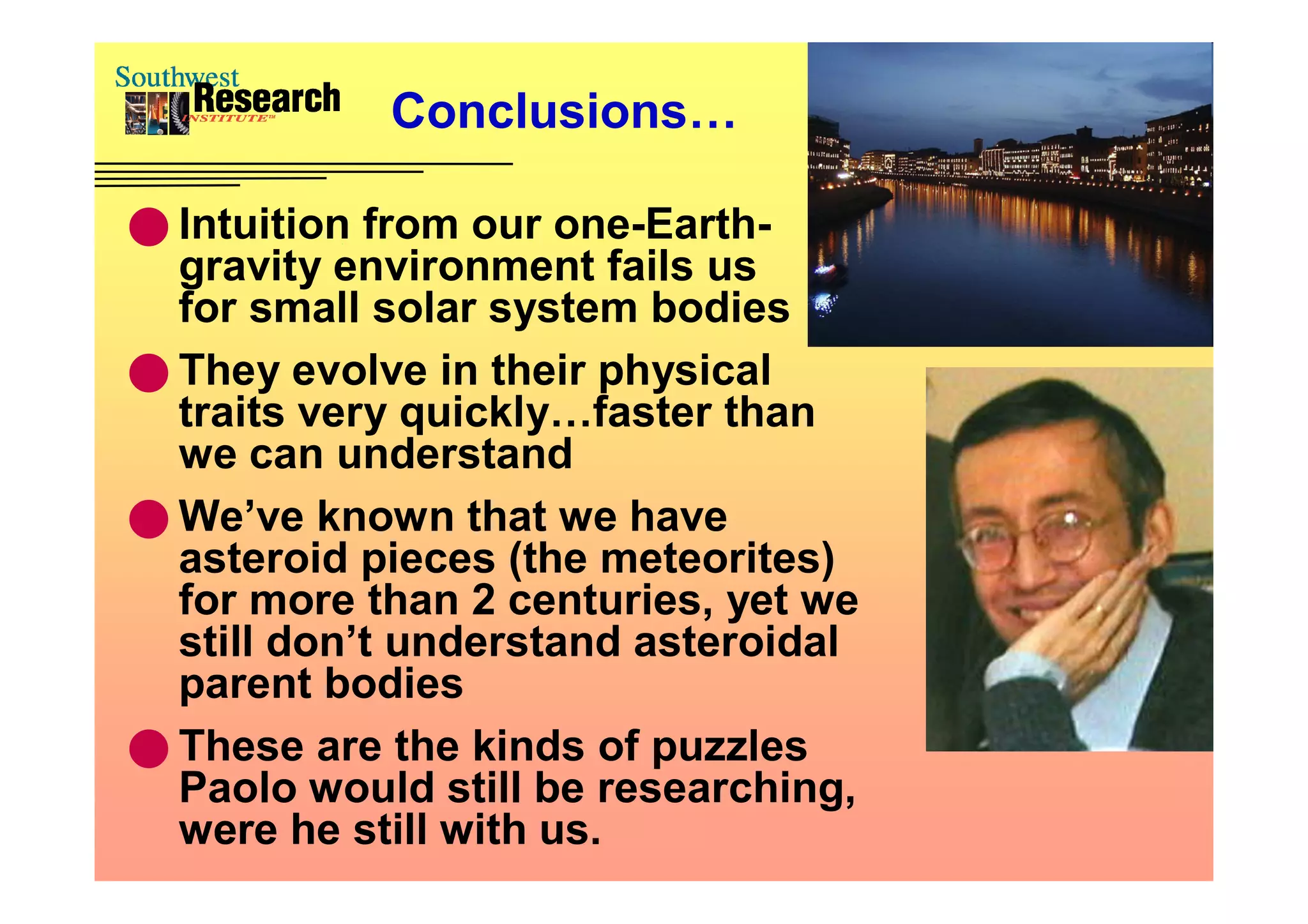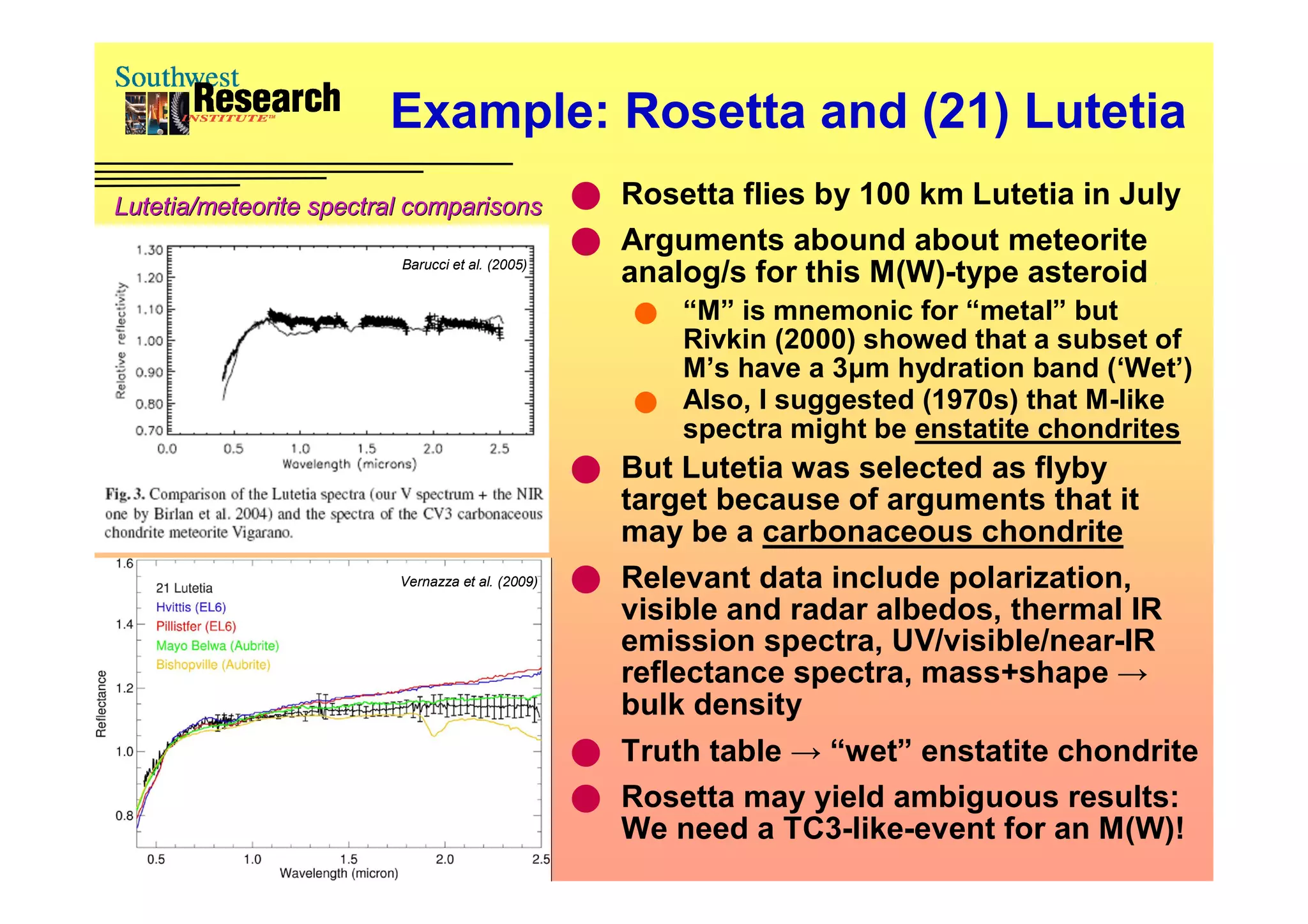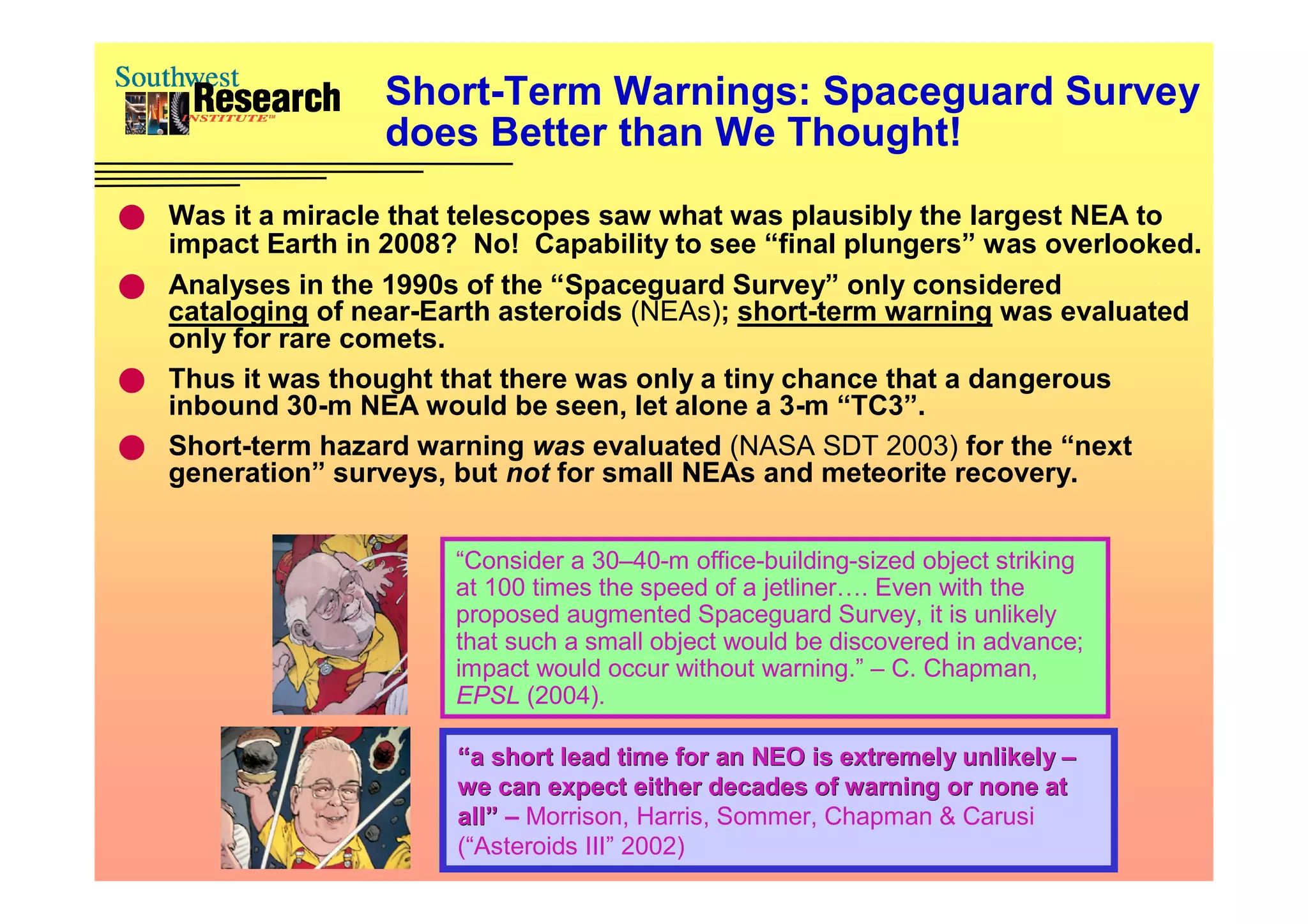The document discusses the puzzling characteristics of small asteroids, particularly double asteroids and their relationship with impact craters on various celestial bodies. It highlights the unexpected interactions and evolutionary processes of near-Earth asteroids (NEAs), including their cratering behaviors and the complexities of meteorite formation. Additionally, it addresses the advancements in predicting asteroid impacts and the implications for understanding asteroid parent bodies, as well as the challenges faced in recognizing these small bodies' rapid physical changes.
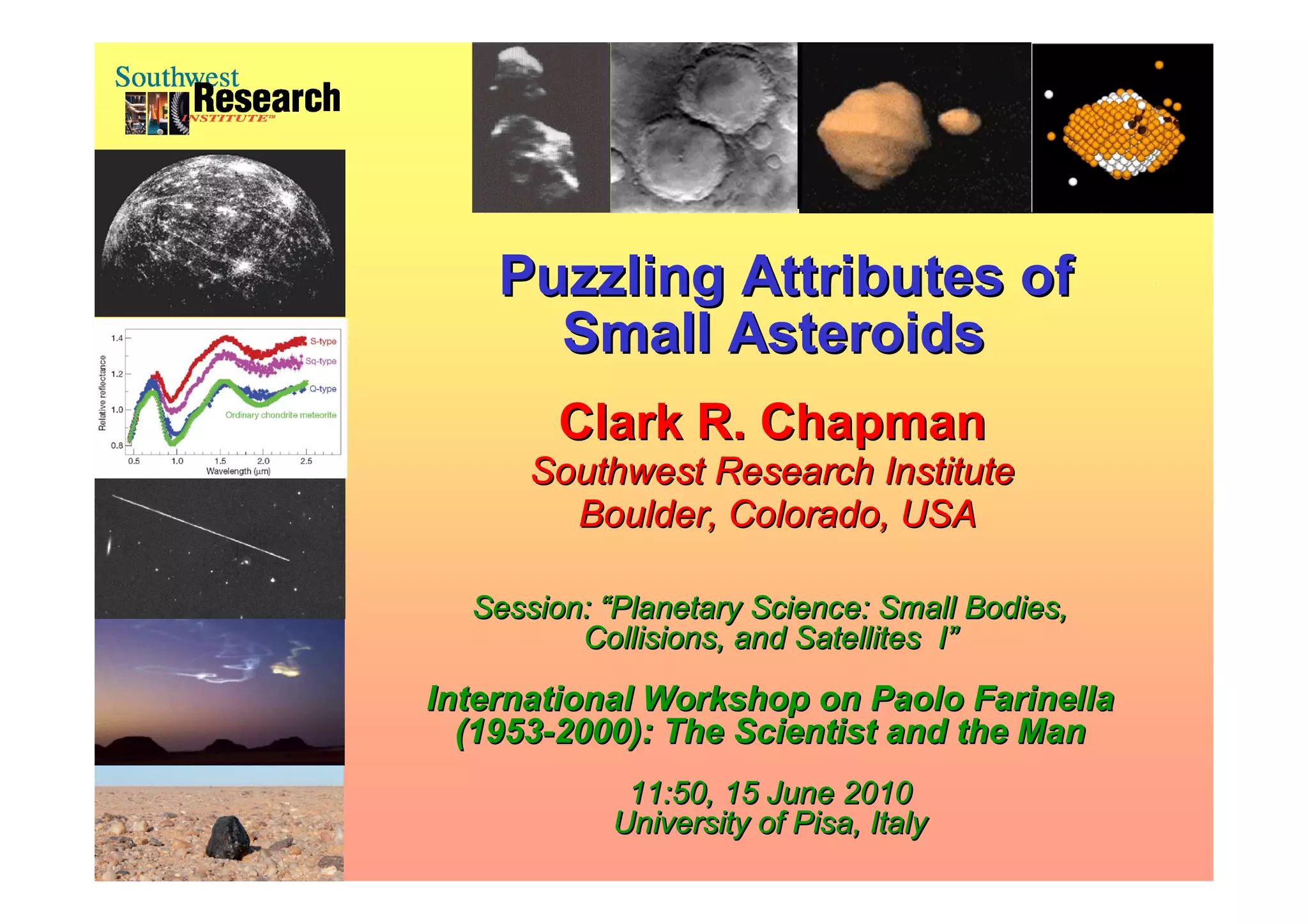
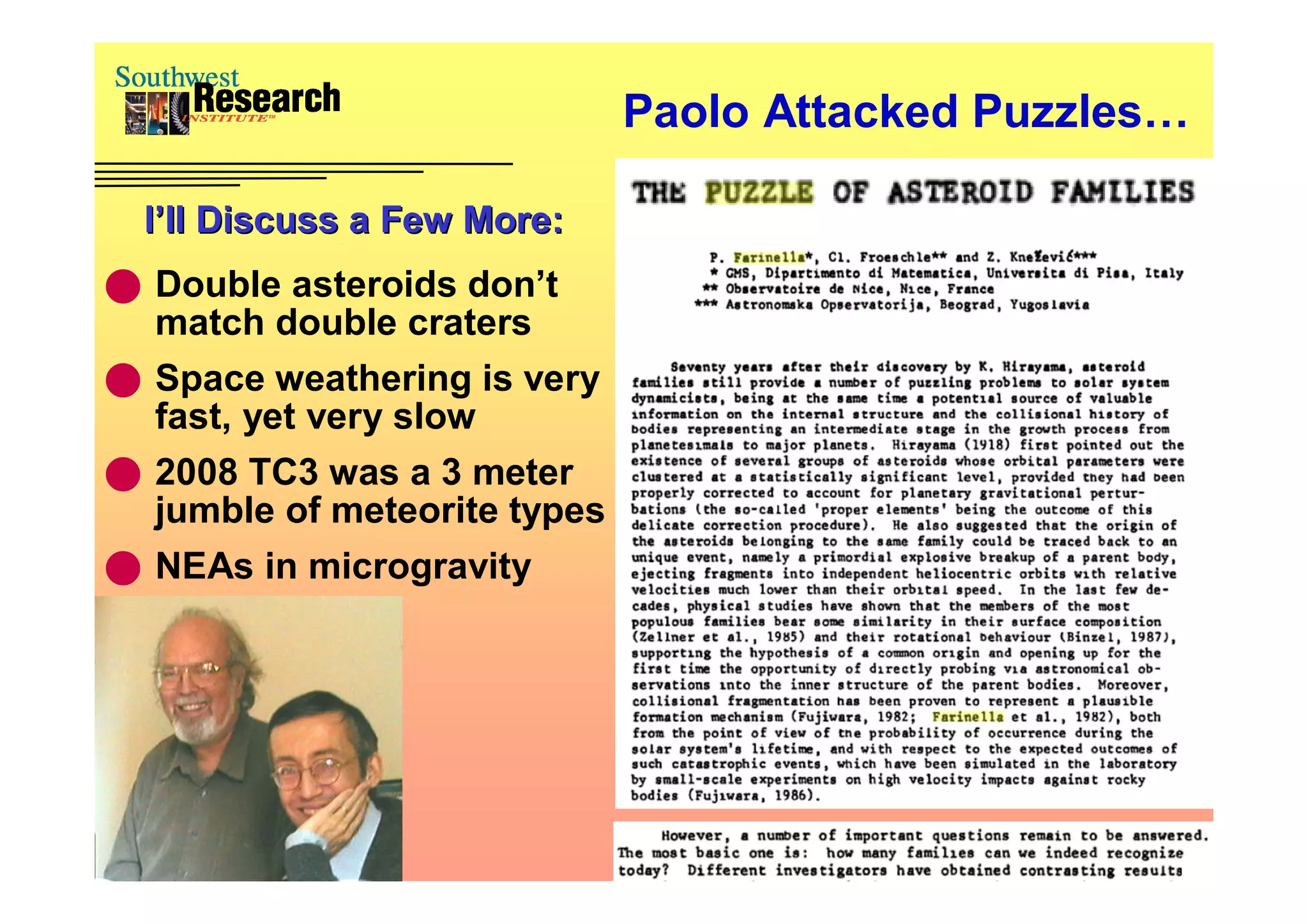
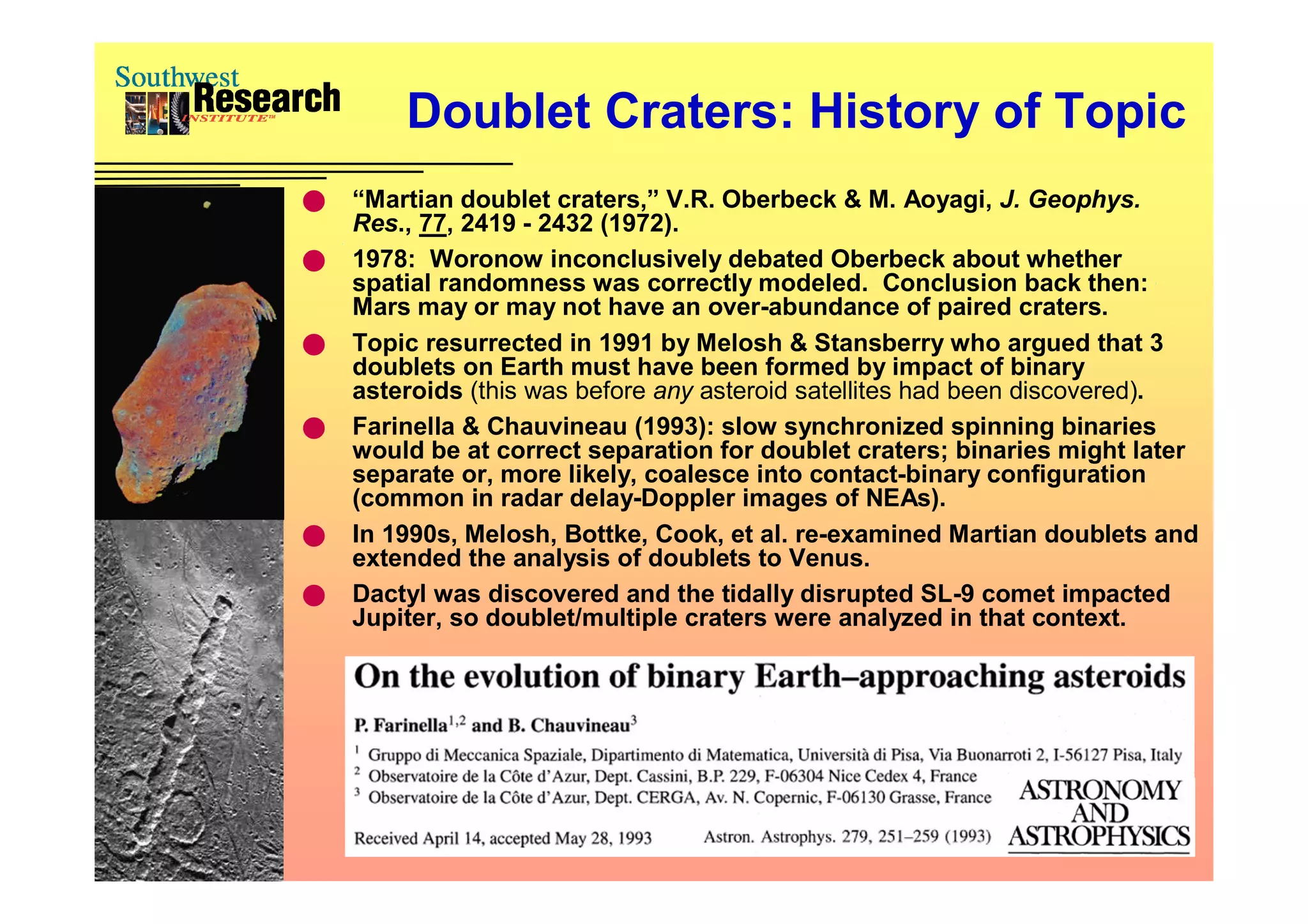
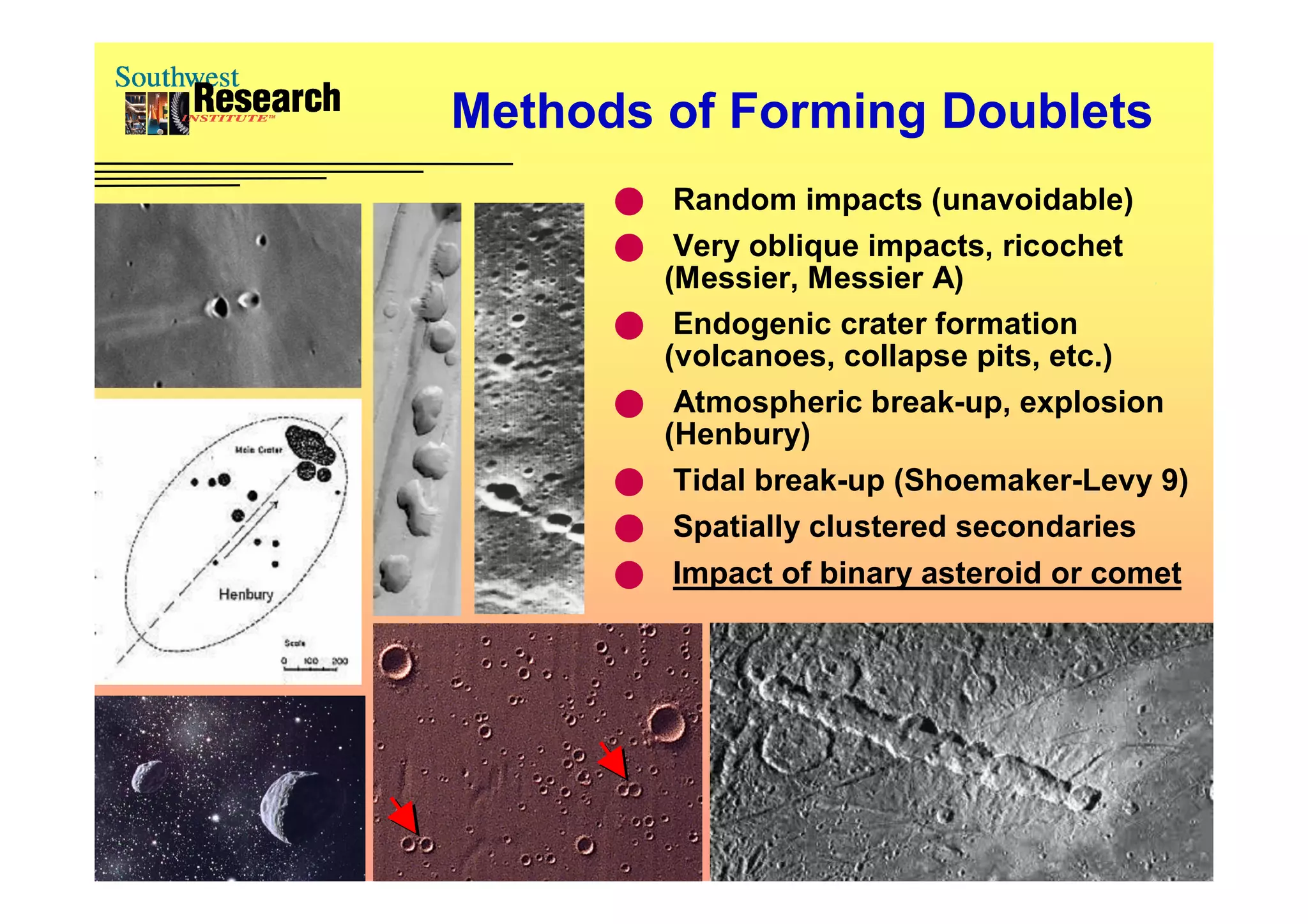
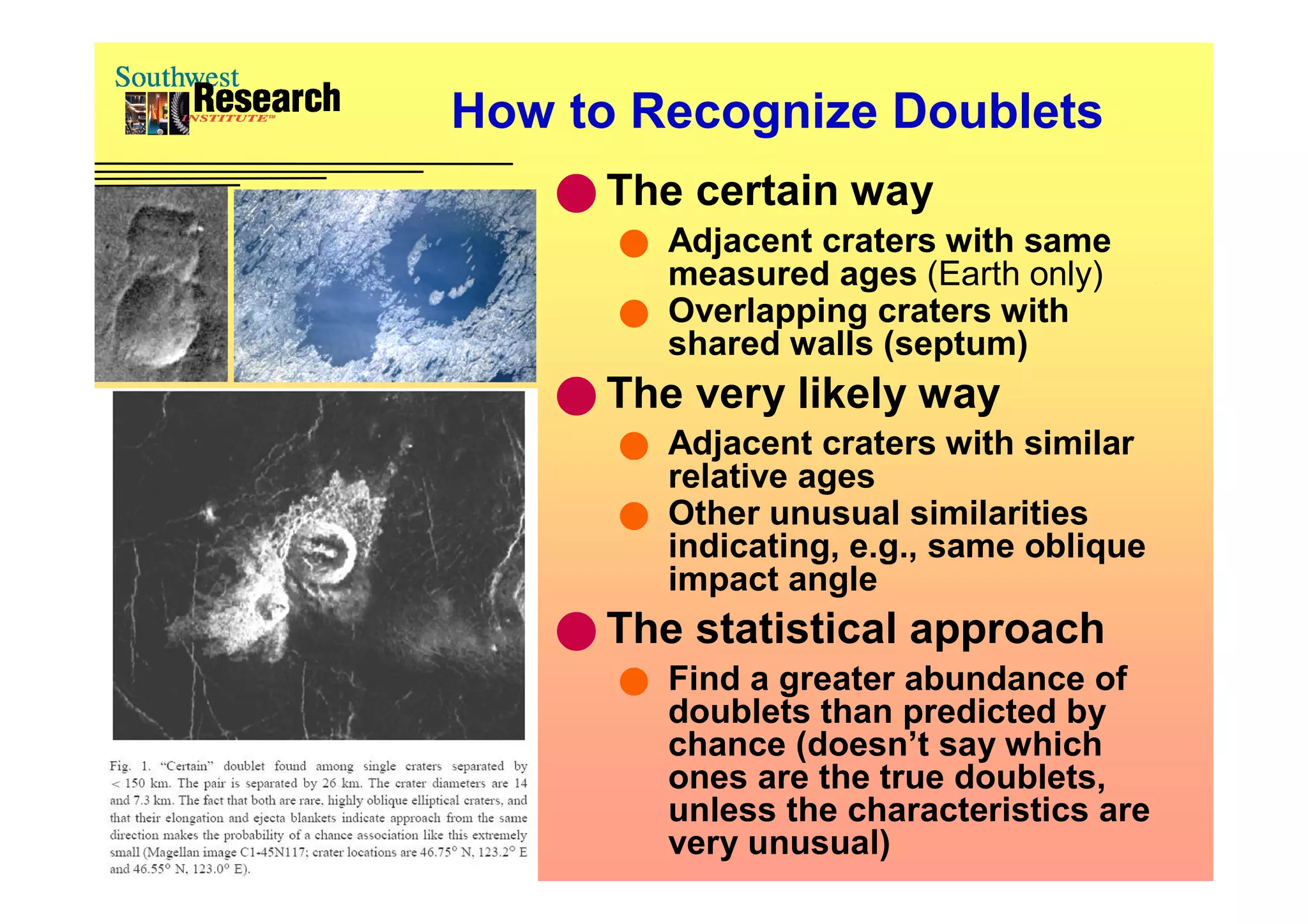
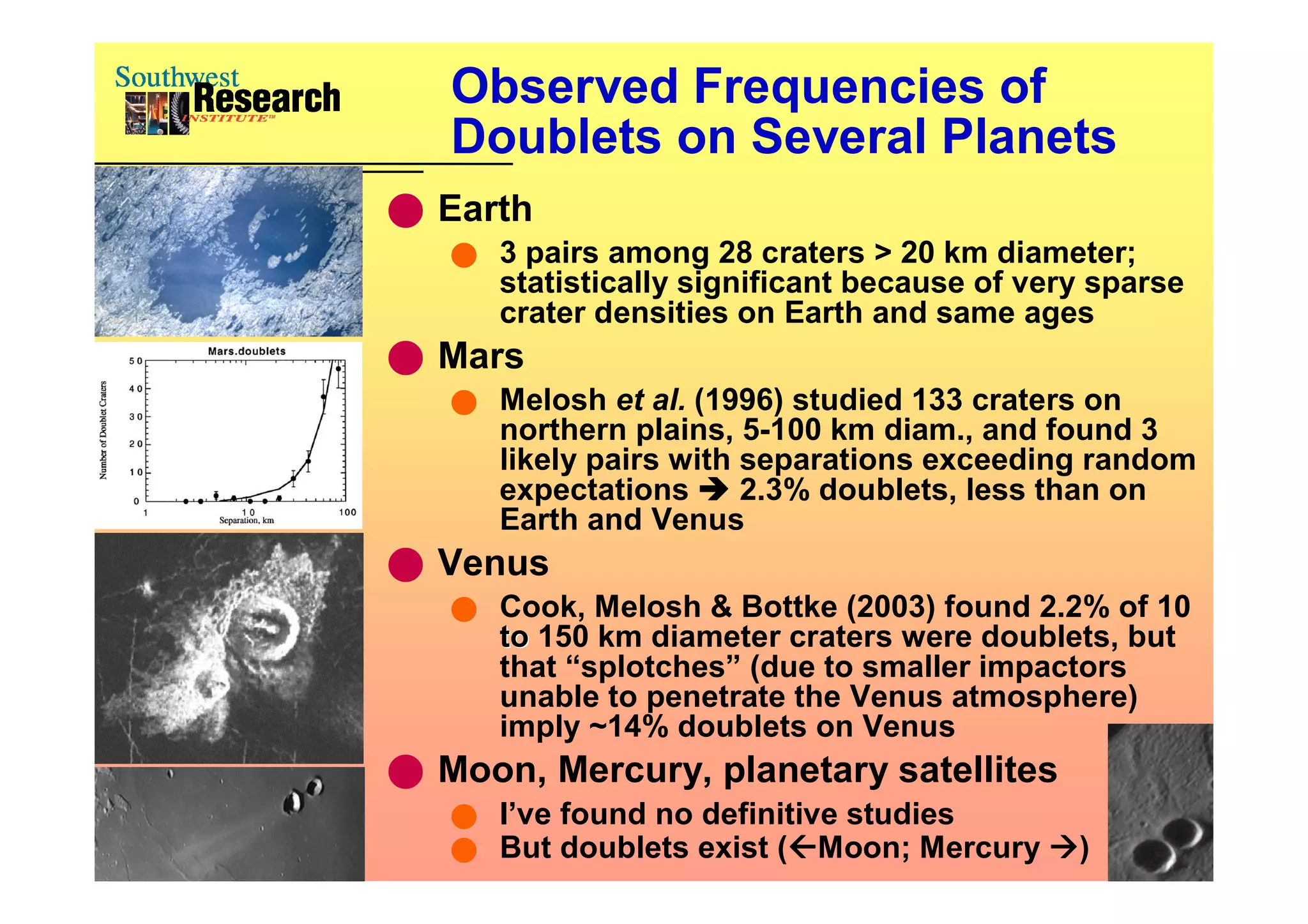
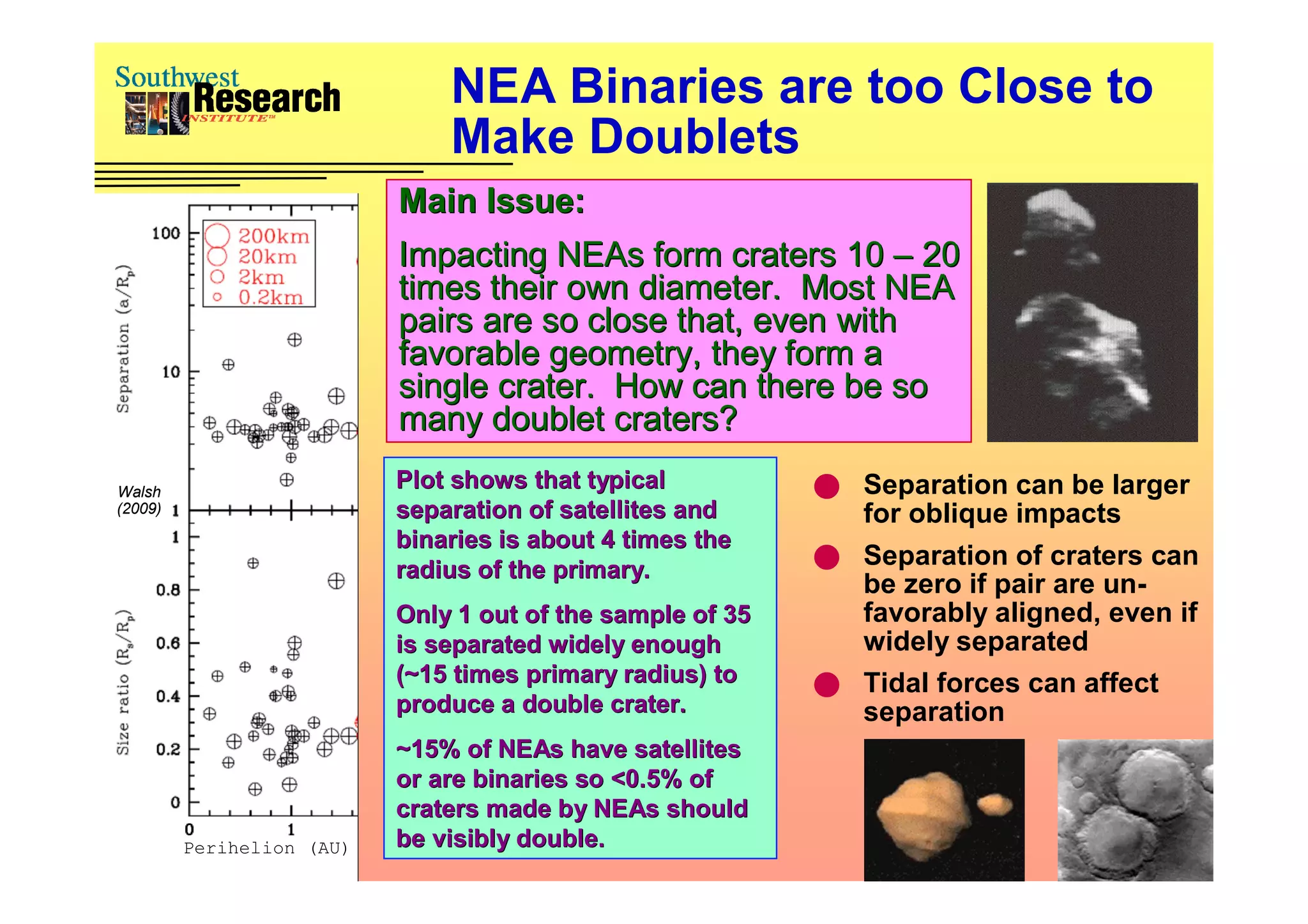
![Space Weathering is Fast…
Or is it? (It is a Puzzle!)
Binzel et al. (2010) “Space weathering” is the process that
transforms the spectral reflectance (colors and
albedo) of the surface of an airless body by
reddening and/or darkening it (mainly by solar
wind; also micrometeorite impacts).
Vernazza et al. (2009) study dynamically very
Walsh et al. (2008)
Walsh et al. (2008) young family asteroids and find that most space
weathering color changes occur in ~1 million yrs.
Following a suggestion of Nesvorny et al. (2005),
Binzel et al. (2010) find that frequent, distant tidal
encounters with Earth by NEAs produce color
changes (tidal rejuvenation of surfaces?). Few
NEAs (or MBAs) are Q’s. [Can YORP spin-up help?]
Yet bright crater rays persist for 100s of m.y.
Rays from Tycho crater on the Moon (~100 m.y.
old) dominate the full Moon
Copernicus rays are still prominent after 800 m.y.
Mercury is periodically bombarded by solar wind,
yet rays from large, infrequent craters are vivid.](https://image.slidesharecdn.com/n-18-chapmanpuzzling-attributes-of-small-asteroids-101005025145-phpapp01/75/N-18-chapman-puzzling-attributes-of-small-asteroids-8-2048.jpg)
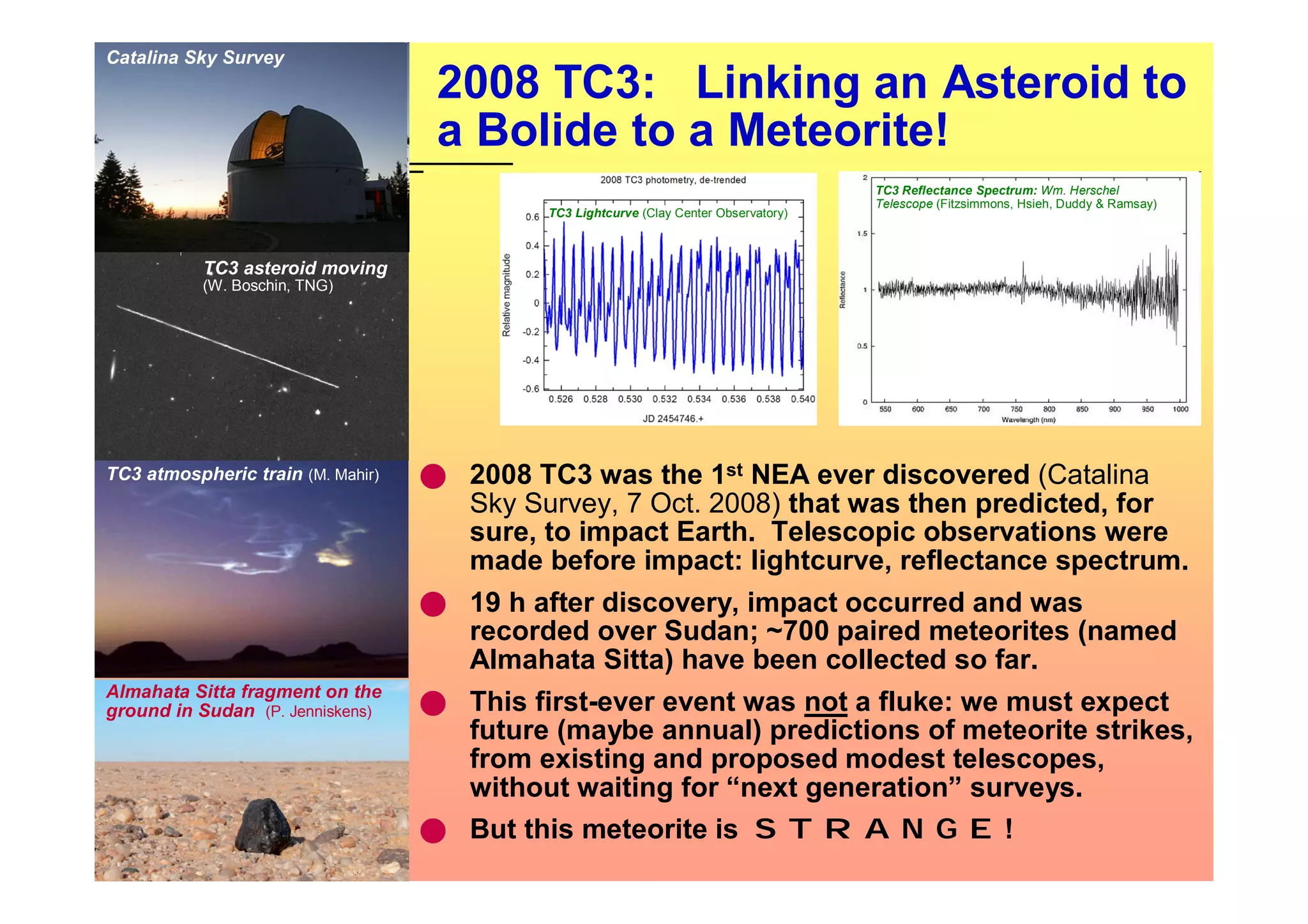
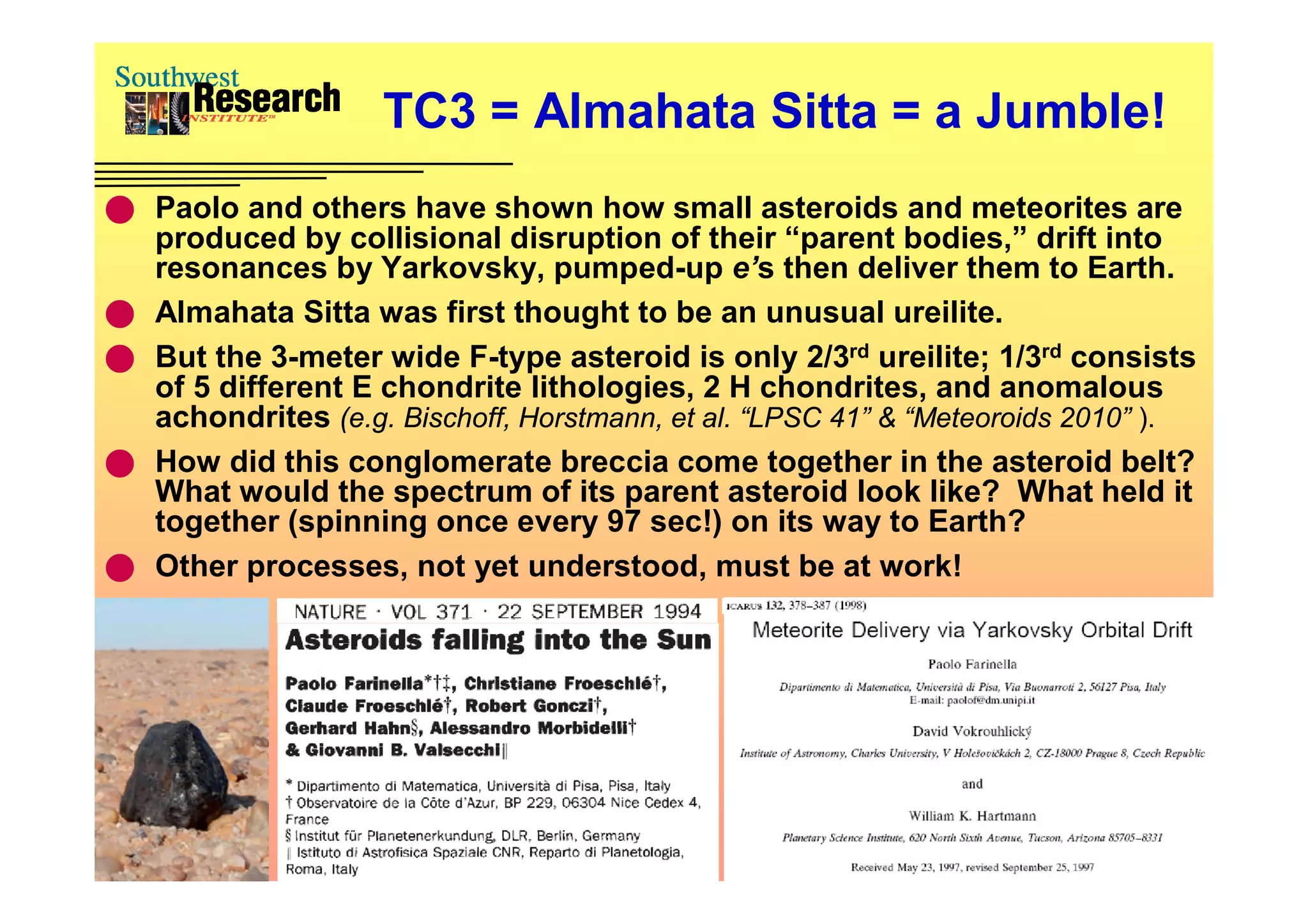

![Once Upon a Time: Collisions Ruled…
Now it’s mainly Sunlight and Tides
Tidal Mass- Interasteroidal collisions (both catastrophic
Shedding disruptions and frequent, small cratering events) were
invoked to explain everything that happened to
Following a sug-sug- asteroids after early accretion and thermal
gestion by Nes-
Nes- processing: size distribution, spin rates and axis tilts,
vorny et al., Bin-
al., Bin-
zel et al. (2010)
al. liberation and delivery of smaller asteroids and
show that tidal meteorite fragments into resonances, asteroid
encounters with satellite formation, regolith properties, etc.
Earth (perhaps
even very distant Yarkovsky Effect (reintroduced for 3rd time in the 20th
ones) “freshen” century by D. Rubincam in 1980s) shown by Farinella,
the colors of the Vokrouhlicky, Bottke and others to cause meteoroids
space-weathered
space- from anywhere in inner half of main asteroid belt to
surfaces of NEAs.
NEAs. drift into resonances, which deliver them to Earth.
YORP Effect (resurrected from mid-20th century by D.
Rubincam in 1998) shown to be the major process
shaping the axial tilts and spin rates of smaller
asteroids. [Radzievskii 1954: “A mechanism for the disintegration of
asteroids and meteorites.”]
These two Yarkovsky Effects may dominate the
physical and dynamical behavior of smaller asteroids.](https://image.slidesharecdn.com/n-18-chapmanpuzzling-attributes-of-small-asteroids-101005025145-phpapp01/75/N-18-chapman-puzzling-attributes-of-small-asteroids-12-2048.jpg)
